


Guidance for schools
We are sharing guidance on how to mitigate children's exposure to traffic pollution in and around schools.
General recommendations

Measures to limit exposure to air pollution include active and/or passive control systems at the source (e.g. limiting exhaust emissions), receptor (e.g. masks) and between source and receptor (e.g. green barriers).
Exposure can also be mitigated by appropriate behavioural changes and informed decision-making, such as the selection of routes to avoid pollution hotspots.
A holistic approach, with communication and participation between schools, children, parents, communities and governmental bodies, is therefore key to overall change and effective exposure reduction.
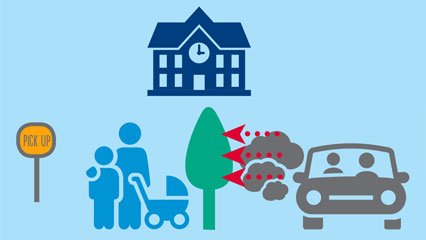
Creating a clean air zone around schools by implementing 'active' solutions (anti-idling approaches to control vehicle emissions, relocating drop-off/pick up points away from school entrances etc.) can minimise pollution levels in and around schools premises.
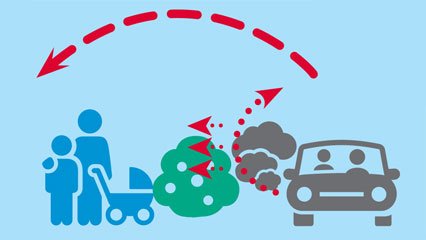
'Passive' control systems, such as green barriers (e.g. hedges) along the boundary between school premises and adjacent roads, can minimise the daily exposure of school children to traffic emissions.
Careful plant selection, considering the physical context and environmental conditions of the site, can minimise trade-offs (e.g. pollen emissions) and maximise the potential for other ecosystem services such as noise pollution reduction or biodiversity support.

Restricting the opening of doors/windows that face the drop-off/pick-up point can reduce the infiltration of traffic-emitted particles but increase carbon dioxide build-up in nearby classrooms. Use of adequate mechanical ventilation and air filtration, perhaps including self-standing units, can further reduce the build-up of harmful particles and other pollutants including carbon dioxide.
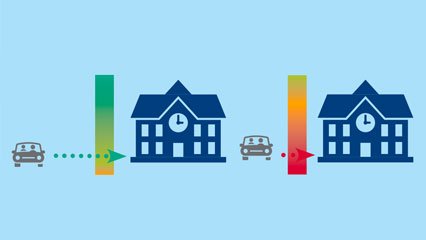
The majority of schools are close to busy roads, where air pollution is typically highest. Pollution concentrations tend to decay exponentially with distance from the road.
Consequently, new school buildings should be strategically located away from main roads, where possible, but with safe walking passages between the school premises and main connecting roads.
They should also be within walking distances of communities, to encourage walking and cycling and to minimise impacts of car emissions by parents/carers during school runs.
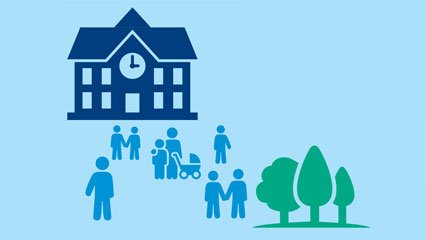
Walking to/from school should be encouraged for the benefit of mental and physical wellbeing and to support independence, social skills and road safety skills for children, as well as to reduce traffic volume/congestion and air pollution. Regular walking to/from school can also strengthen children’s sense of community and understanding of their local area.
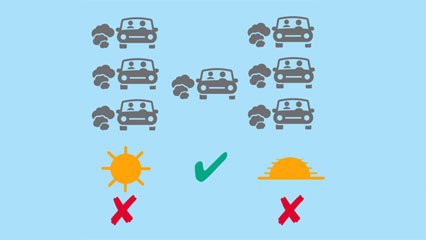
Concentration of fine particles are generally highest during morning drop-off hours (7am - 9am) due to higher traffic volumes and less favourable dispersion conditions when compared with afternoon pick-up hours (3pm - 5pm).
However, avoiding non-essential travel during both morning and afternoon peak hours can have a direct, positive impact by reducing traffic volume, congestion and journey times, and consequently reducing the pollution exposure of children and their parents/carers during school runs.
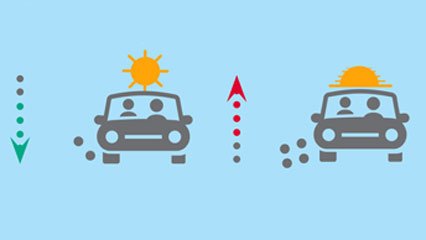
Despite less traffic and better atmospheric dispersion conditions during afternoon pick-up hours than during morning drop-off hours, concentrations of coarse particles can still be higher due to drier road surfaces in the afternoon, assisting the resuspension of road surface dust by traffic.
Overnight dew usually suppresses roadside resuspension during morning hours, and wetting road surfaces during dry periods in the daytime could effectively reduce resuspension of road dust.
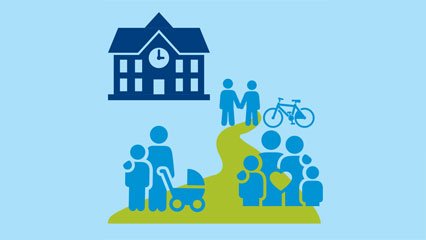
Direct collaboration via citizen science can improve awareness of air pollution and mitigation measures among children, parents, schools and communities.
Citizen science and participatory research can also enable individuals to share their experiences and/or concerns (e.g. regarding road safety) with researchers and policymakers for all-round action to address significant issues.

Air pollution and mitigation strategies could be integrated into the national curriculum. For example, fundamental scientific, social and road safety skills are reinforced as part of practices recommended in this guidance document, all of which help children to meet curriculum objectives.
Moreover, the increasing availability of affordable pollution sensors could support relevant hands-on exercises and pupil-led experiments in curriculum subjects or before/after school clubs.
Targeted recommendations
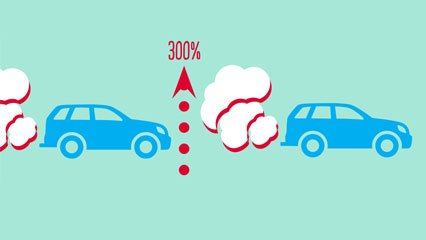
Avoiding vehicle use during drop-off hours could result in a threefold reduction in school children’s exposure to harmful vehicular pollutants.
Children
- Stay away from a car or a queue of cars when their engines are on.
School
- Schools should support more children to walk, e.g. through accreditation and behaviour change schemes.
- Vehicle use inside or very close to school premises should be discouraged by relocating drop-off/pick-up points away from the school entrance.
- Staggered drop-off times and/or carpool clubs may be encouraged.
- Reinforce that any no-stop areas(e.g. double yellow lines) around the school should be respected.
Community
- Switch off the engine while you wait, even if it’s only briefly.
- Avoid vehicle use during drop-off (as well as pick-up) hours, or park cars away from the school entrance.
- Parents and children should, where feasible, walk or cycle to/from school, to reduce their negative impact on air quality, increase their physical activity, and practice road safety and navigation skills.

Staggered collection times during pick-up hours due to after-school activities substantially reduces traffic congestion and, subsequently, traffic emissions.
Children
Keep your distance from idling cars as much as possible.
School
- Organise and schedule before- and after-school activities to stagger child drop-off and pick-up times or a carpool club to reduce the number of cars.
- Support access to bicycles for all, e.g. via a bike pool scheme.
Community
- Avoid vehicle use for school runs, where possible, or park cars away from school entrances.
- Encourage local authorities to create controlled parking zones and to prohibit parking on streets around schools to improve the flow of cars during drop-off/pick-up hours.
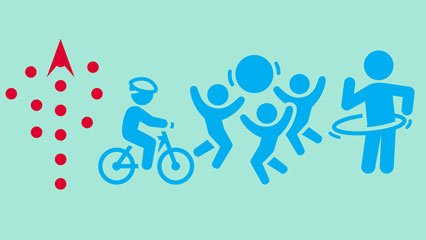
Nature-based solutions, such as a dense hedge around the school perimeter, can help to improve air quality in the school environment.
Any activities in the playground should be limited during drop-off hours until adequate mitigation measures are implemented by the school and/or community.
Children
- If your playground is near a road, try not to play near that road in the mornings.
School
- Any outdoor classes in morning hours should, where possible, be rescheduled for later in the school day (i.e. afternoon).
- Schools can plant or improve low-allergy, non-poisonous green barriers (e.g. hedges) between school premises and nearby roads to further reduce traffic impacts on school environments.
- Consider implementing an additional entry close to the main road, with a safe footpath surrounded by green barriers inside the school premises.
- Schools should prevent children from playing near any fence bordering a busy road.
Community
- Local community members can support the school in planting green barriers around the school and/or implementing other suitable control measures.
- Local community should collaborate with local authorities to adopt a planning approach in all existing and new developments that prioritises safe and enjoyable streets, in order to encourage parents and children to walk.
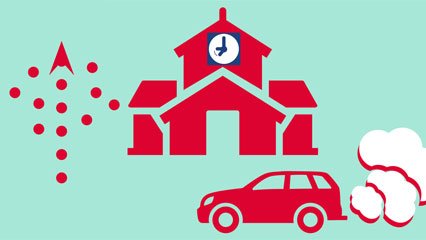
Reduce traffic emissions adjacent to the school by restricting vehicle entry and relocating drop-off points away from the school entrance.
Children
Avoid opening doors or windows in classrooms next to drop-off points.
School
- Drop-off/pick-up points should be away from classroom entrances.
- Children should be directed to relevant classrooms via interior doors/routes, to restrict exposure to traffic emissions from drop-off/pick-up points.
- Access to classrooms via doors that face towards/close to traffic congestion should be restricted to reduce the impact of traffic-emitted particles on indoor air quality.
Community
- Avoid vehicle use during drop-off/pick-up hours wherever possible, and try to park cars away from school entrances.
- Encourage parents and children to walk or cycle to/from schools.

To minimise traffic-related air pollution in classrooms, keep any traffic-facing doors/windows closed during peak hours and open internal doors/windows instead.
Children
- If you can see the school entrance from your classroom window, try to keep the window closed during your first lesson to protect yourself from morning pollution. If your teacher says so, you can open windows later in the day or if you feel hot or tired.
School
- Consider installing carbon dioxide monitors in classrooms.
- Draw fresh air into the classroom if teachers notice/are made aware of symptoms among children of high carbon dioxide levels (e.g. tiredness, inability to think clearly, headaches, dizziness).
- Doors/windows that immediately face a road should be utilised for air exchange only during off-peak hours.
- Clean air purifiers/filters regularly or consider setting up proper air filtration and ventilation systems to mitigate indoor air pollution and minimise infiltration of outdoor pollutants.
Community
- Residents should work with local authorities to ensure that new schools are strategically located in areas away from main roads, with safe walking/cycling passages to link the school premises with main connecting roads as well as housing/communities.
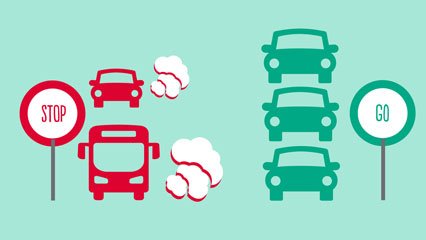
Stop-start and acceleration-deceleration conditions usually lead to elevated pollutant concentrations at places such as traffic intersections and bus stops, and minimising time spent at them will reduce your exposure to pollution.
Children
Try to stand away from the curb, traffic intersections and bus stops to reduce your exposure to harmful vehicular pollutants.
School
- Schools should notify parents/carers that commuting to/from school via main roads presents a risk of high exposure to vehicular emissions.
- Alternative routes with no/less traffic should be suggested.
Community
- With support from schools, communities should encourage local authorities to move traffic intersections and bus stops away from school premises where feasible.
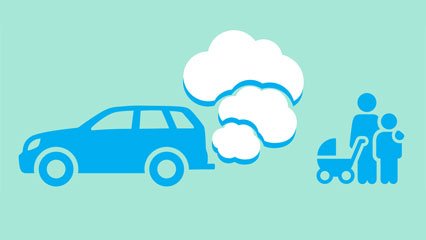
Pollutant concentrations are generally highest in the first metre from ground-level and decrease with distance (including height) from the road. Where feasible, increasing the breathing height and keeping as far away as possible from vehicle exhausts will reduce exposure.
Children
- Try to keep away from the edge of the road when walking to or from school.
School
- Schools should stress the significance of high concentrations at lower heights to parents/children and suggest alternative, cleaner routes (e.g. passing through parks).
Community
- Where feasible, using high-riding prams rather than low-riding pushchairs can raise the breathing height of the child and reduce their exposure.
- Carrying babies or young children (e.g. in a baby carrier backpack) at and around pollution hotspots, where it is safe to do so, may also increase the height of their breathing zone and provide an opportunity to face them away from the source to consequently reduce exposure.
- Community members may consider leaving space for green barriers (e.g. hedges) between main roads and buildings, walkways, cycleways, etc when planning any development on private land.

For example, particle number concentrations can be up to 72% higher at the bottom seat of a double pram than at the top seat.
The first metre above the road level, where vehicle exhaust emissions meet the ambient air, coincides with the breathing height of young children or pushchair riders and is thus a high-risk zone for air pollution exposure.
Children
- Remember to walk on the far side of the pavement, away from the edge of the road, to stay away from pollution.
School
- Dedicated waiting areas could be provided for parents with pushchairs, which should be away and at elevated heights from vehicle parking spaces.
Community
- Where possible, parents should avoid bringing prams or pushchairs close to busy roads and/or queuing traffic, and may opt for parent-facing prams if they can do so.
- Active control at the source (e.g. reducing vehicle use) is always more effective than any single passive strategy to protect the recipient. However, any parents considering a new pram or pushchair may consider the in-pram breathing height.

Ideally, pram or pushchair covers should be used near busy roads or at pollution hotspots.
Children
- If your pushchair has a cover, you can use it to protect you from pollution near the road.
School
- Schools can promote mitigation measures to parents/carers, such as choosing alternative and low-traffic routes, minimising time spent at pollution hotpots, and using pram covers where applicable. Schools should also clearly signpost any available waiting areas in school premises for parents with pushchairs.
Community
- Waterproof/solid pram covers may be utilised for short periods in cold weather conditions at pollution hotspots (e.g. traffic intersections and bus stops) as physical barriers between vehicle exhaust emissions and in-pram breathing zones. There is no readily available scientific evidence to say whether or not breathable covers (e.g. for sun protection) are similarly effective.
- Pram cover use is not recommended for extended periods, in order to avoid the accumulation of carbon dioxide, nor in hot weather conditions.

This community involvement also helps individuals to make informed decisions for everyday exposure mitigation.
Schools and local residents should not merely be participants in citizen science studies but should be active partners with researchers, following a three-pronged approach of:
- Inclusion (e.g. introducing seminars and workshops to involve people from diverse socio-demographics)
- Collaboration (i.e. continuous interaction between researchers, communities and policymakers)
- Reciprocation (e.g. debate between citizen scientists regarding their research findings).
Children
- Children can participate in data collection activities for hands-on experience.
- They can share their experiences with their friends and families to organise their thinking and reinforce good practices.
School
- Schools can participate in the design of studies, such as by co-developing research objectives and co-identifying sampling locations.
- Schools should support data collection, share findings with parents/guardians and children, and adopt good practice (both in terms of scientific rigour and any identified exposure control measures) to lead by example.
Community
- Communities can participate by co-creating and co-implementing studies, thereby ensuring that these studies and their findings have a broad public impact.
- They can facilitate access to local schools, venues, and other environments for workshops, data collection, etc, and can take part as individuals.